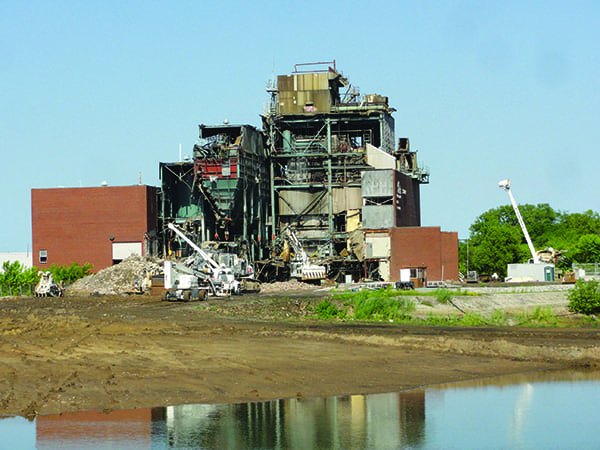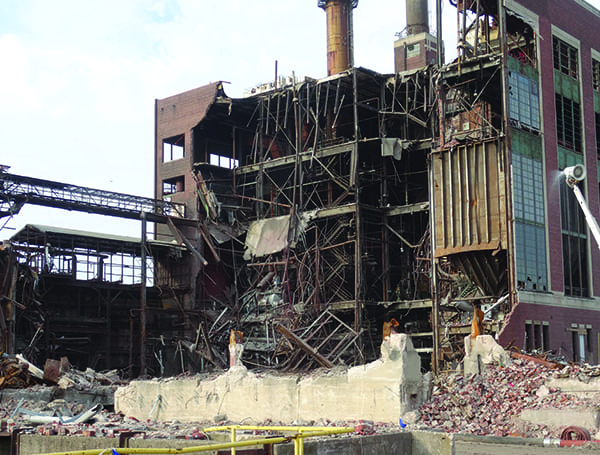Well-Planned Retirement: Keys to Successful Coal Plant Decommissioning
Credit to Author: POWER| Date: Thu, 02 Jan 2020 05:00:00 +0000
The post Well-Planned Retirement: Keys to Successful Coal Plant Decommissioning appeared first on POWER Magazine.
Hundreds of coal-fired power plants are now retired or facing retirement in the near future, and utilities face a number of decisions. Are there commercial reuse options for the plant or the site itself? Are there unforeseen environmental issues? Should the plant site be mothballed for future restart, or retrofit to burn natural gas?
These are only a few of the questions plant owners must address during decommissioning. Answering them correctly requires starting with the end goal in mind.
If we were to retire from our careers tomorrow, we might leave the office with leftover cake, balloons, and a sense of relief. However, if we were one of those folks who had not explored or planned for options about what comes next, that good feeling might not last.
 |
1. Each retirement and decommissioning of a coal-fired power plant will have unique variables. A successful demolition project requires analysis and planning, and operators will want to set aside financial reserves to cover the costs, while also looking at ways to offset expenses through re-use of materials and infrastructure. Courtesy: Burns & McDonnell |
This scenario has parallels for utilities looking to sunset their coal units. Though each coal plant retirement has unique variables (Figure 1), success almost always depends on planning, analysis, and setting aside financial reserves to cover most if not all of the costs.
The coal plant retirement wave is being driven primarily by the cost of complying with new environmental regulations, and the increasingly unfavorable economics of running coal plants. Most plants that have been retired or will soon be closed were built decades ago with few air or water pollution controls. With many of these older plants generating 300 MW or less, it is often not feasible to justify the costs of retrofitting air and water pollution control equipment.
According to the U.S. Energy Information Administration (EIA), more than 100 GW of fossil-fueled capacity has been retired in the past decade, thanks to the double whammy of expensive environmental retrofits and unfavorable economics for dispatching these smaller and less-efficient plants. The EIA reports more than 30 GW of additional announced retirements in the next five years, with total coal-fired U.S. generating capacity dropping to about 200 GW by 2024.
The power industry has changed dramatically in recent years and more disruptions are on the way. The process of retirement planning for coal units must be done holistically within the context of an overall resource plan. But certain principles will always apply, and a utility can best prepare by analyzing what may be needed to succeed in the future and creating a plan.
Key Takeaways—How a Little Planning Can Pay Off Big■ Many plants occupy highly desirable real estate with access to water and railways. With proper remediation, properties can be sold for re-use. ■ The rising number of retiring plants has contributed to an increase in the scrap metal market. Predicted global revenue from coal plant decommissioning could total $5.3 billion this year. ■ Repowering a plant with gas-fired units can make sense because critical infrastructure is already in place, including transmission lines, substations, and water. |
Risks, Costs, and Who Is on the Hook
Like personal retirement decisions, coal plant retirements often boil down to unique circumstances involving risks, costs of continued operation, and who may be responsible for decommissioning costs. Some circumstances can be anticipated and planned for, while others cannot.
The best first step is to analyze whether the plant is a candidate for retrofitting the existing generating equipment to natural gas or another fuel source, or repowering the site with newer natural gas-fired generation technology. The economic feasibility can depend on many variables but usually hinges on proximity to natural gas pipelines, overall condition of equipment, and efficiency of the current generating facilities. Though many coal plants have existing substations and transmission interconnections, the costs of constructing miles of new gas pipeline, combined with a total retrofit, could be more expensive than going to a greenfield site with immediately adjacent infrastructure.
If a retrofit is unfeasible, the next option is to consider whether commercial reuse is possible for any part of the physical plant structure. Though this is location-dependent, some older plants have been designated as historically significant structures and thus eligible for tax incentives. One such project to rehabilitate and restore the 100-year-old Cannon Street Power Station in New Bedford, Massachusetts, recently resulted in a new five-story commercial structure being added to the real estate inventory on the town’s waterfront.
Assuming, however, your coal facility is not a good candidate for retrofit or commercial reuse, the next step is to commission a study that examines all the key cost drivers of decommissioning. In nearly every case, environmental remediation will be the largest expense. Studies should identify:
■ Location and quantity of asbestos.
■ Presence of polychlorinated biphenyls (PCBs).
■ Likely areas of soil or groundwater contamination.
■ Mercury, even though this material is usually found in small quantities.
■ Lead paint (this can be accounted for in steel demo costs).
■ Site-specific issues, such as ash ponds and landfills.
Ash pond and landfill closure is not cheap, due to current state and federal requirements for closure. Assuming your decommissioning project has a budget of $36 million (typical for an average two-unit coal facility), ash pond remediation can range from 70% to 75% of this total. Asbestos and other hazardous material remediation can account for an additional 5% to 7% of costs, with structural demolition accounting for the rest.
Managing the Regulatory Process
Once you have decided decommissioning and dismantlement is the best option, it’s time to launch the studies needed to support conversations with your state public utility commissions (PUCs) and regional transmission organizations (RTOs). Though both regulatory organizations have different mandates, each needs to be well-informed. Don’t wait for formal hearings before beginning your conversations. Working up front with regulatory authorities to involve them in the process and get buy-in on planning, studies, and solutions can pay big dividends later.
Preparation can be particularly important in states that provide statutory support for annual dismantlement accruals. These accruals cover contingency costs along with dismantlement costs. Accounting treatments may vary by state, but in general, decommissioning costs are rolled into the depreciation rate and the accruals go to accumulated depreciation. In some states, accumulated dismantlement reserves and accruals can be maintained in a special account, separate from other accumulated depreciation reserves and expenses. More and more states are recognizing these expenses are real and providing a mechanism for cost recovery is fair, because of the public benefits that result from a well-managed decommissioning process.
 |
2. The value of materials that can be reused after demolition of a coal-fired power plant is an important consideration in the decommissioning process. Plant owners should obtain good estimates of the amount of material that can be salvaged, and its potential market value. Courtesy: Burns & McDonnell |
It is important to have well-documented cost estimates during these meetings. You should focus on the big stuff, with steel and concrete (Figure 2) understood as the main structural demolition drivers. Obtain good estimates of the volume of materials and cross-check with similar facilities to verify estimates. If possible, have a demolition contractor review your estimate.
In planning for both formal and informal interactions with state PUCs or RTOs, anticipate tough questions. Expect critiques from commission staff along these lines:
■ No net cost or positive value demolition has been allowed in other cases.
■ Contingency estimates are too high.
■ Estimated scrap values are too low.
■ Productivity factors are too low.
■ Proposed levels of decommissioning and remediation are excessive.
Question one essentially can be expected to follow the line of reasoning in other decommissioning cases in which certain demolition costs were disallowed. Expect to be asked to respond to evidence presented elsewhere justifying lower decommissioning costs. Sometimes these costs were based on bids from demolition contractors that did not include the additional costs of environmental remediation and other factors. Be ready to show your cost projections are accurate for your particular site.
For question two, research the contingencies approved in prior regulatory proceedings. Contingencies are typically higher on decommissioning than construction because of the higher level of uncertainty. Judgments and insights from outside professional groups will be invaluable.
The question of scrap values can be tricky because of the volatile nature of the markets for steel, copper, and other metals. Expect to hear arguments from intervenors that utilities should assume higher scrap values because of high demand in growing markets like China and India. These arguments can be refuted by demonstrating the actual historical averages of market prices.
Questions about productivity factors can be countered by looking at the factors approved in prior studies. Also look at published resources and public records of demolition contractor estimates.
The question of excessive levels of decommissioning and remediation can be vexing. A good strategy when preparing for pushback is to start with the literal regulatory requirements, and then outline each step required to meet the requirements of the regulation for complete physical removal and disposal of site materials, plus restoration of the site. Prepare for arguments that other options are available, such as selling the facility, even if market economics do not support it. Be prepared with evidence of actual market conditions for “as is” sales of similar facilities.
Plant owners are finding remediation costs are much higher than anticipated even a few years ago. Though the cost of removing hazardous material can be accurately estimated, new regulations can be a wild card, particularly those affecting ash ponds and landfills.
Planning studies that begin with the end in mind will be a solid basis for any regulatory effort. Many PUCs are recognizing it is reasonable and prudent to allow some cost recovery, given the scale of decommissioning and dismantlement costs faced by the power industry—but don’t assume commissioners will support requests without solid rationale. With proper planning, analysis, and preparation, coal plant retirements, like personal retirements, can definitely lead to brighter days ahead. ■
—Jeff Kopp is managing director of 1898 & Co., part of Burns & McDonnell.
The post Well-Planned Retirement: Keys to Successful Coal Plant Decommissioning appeared first on POWER Magazine.